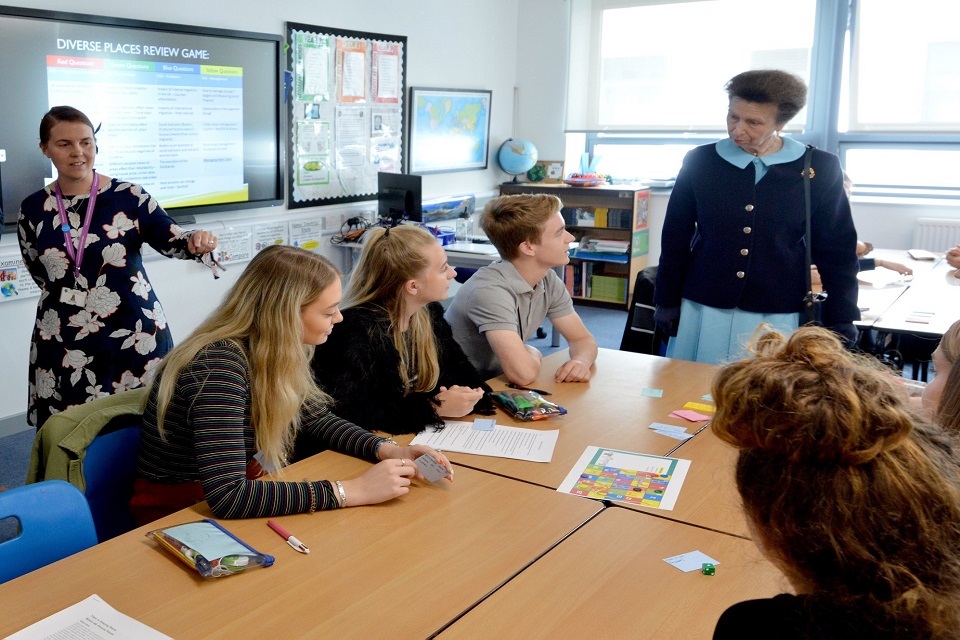- Select a language for the TTS:
- UK English Female
- UK English Male
- US English Female
- US English Male
- Australian Female
- Australian Male
- Language selected: (auto detect) - EN
Play all audios:
Huby _et al_.1 have offered their interpretation of our recent study2 in which we showed the importance of membrane lipid rafts in major histocompatibility complex (MHC) class II–restricted
T cell activation. They propose that because the plasma membrane contains so many lipid rafts and so few specific peptide–class II complexes are required to activate T cells, it is unlikely
that lipid rafts could serve to concentrate the specific class II–peptide complexes that are necessary for T cell activation. However, it is not known yet how many lipid rafts are on the
surface of antigen presenting cells (APCs); how many class II molecules are present in each lipid raft; whether antigen-loading onto newly synthesized class II molecules is truly random; or
whether the specific peptide complexes required to activate antigen-specific T cells are randomly distributed on the plasma membrane. Huby _et al_. propose that aggregation of class II with
lipid rafts serves to increase the local concentration of class II–peptide complexes only if specific class II–peptide complexes are recruited to and associate with a restricted pool of
membrane rafts at (presumably) the immunological synapse. This model predicts that disrupting raft integrity on APCs before chemical fixation would not alter the efficiency of antigen
presentation to T cells. However, our paper showed that raft disruption inhibits T cell activation by fixed APCs—a result that does not fit into their model. Using paraformaldehyde-fixed
APCs at low doses of protein antigen, we show the importance of lipid raft microdomains in antigen presentation. As mentioned, the effect of raft-disrupting drugs on live cells is reversible
and these drugs can directly inhibit T cell activation. These considerations necessitated chemical fixation of the APCs after the addition of raft-disrupting drugs, thereby preventing
reassembly of raft-protein complexes, and removal of these drugs before analysis of T cell activation. Of course proteins are not fixed on the plasma membrane of APCs _in vivo_ and they
often reorganize on the plasma membrane after ligation. By analogy with the well documented ability of lipid rafts to reorganize on the plasma membrane of T cells, we propose that engagement
of specific class II molecules with the TCR on antigen-specific T cells leads to the aggregation of the rafts containing these complexes at the immunological synapse. As there are
presumably “irrelevant” and “relevant” class II–peptide complexes in the same lipid raft, one might be able to visualize this directly. On APCs, a significant fraction of surface class II
molecules constitutively resides in lipid raft microdomains. Huby _et al_. originally proposed that class II association with lipid rafts only occurred after ligation of class II molecules
with antibodies or, presumably, TCR engagement3. It is unlikely that the constitutive association of class II molecules with lipid rafts is a biological accident and therefore not
physiologically relevant. In addition to a potential role for the concentration of lipid rafts containing class II–peptide complexes after engagement with the TCR, we propose that the
“pre-packaging” of class II in lipid raft microdomains might serve to facilitate even further the concentration effects necessary for T cell activation. We look forward to rigorously testing
and revising this model. See “Rafts for antigen presentation?“ by Russell Huby and the Concentration of MHC class II molecules in lipid rafts facilitates antigen presentation by Howard A.
Anderson. REFERENCES * Huby, R. D., Chowdhury, F. & Lombardi, G. _Nature Immunol._ 2, 3 (2001). Article CAS Google Scholar * Anderson, H., Hiltbold, E. & Roche, P. _Nature
Immunol._ 1, 156– 162 (2000). Article CAS Google Scholar * Huby, R. D., Dearman, R. J. & Kimber, I. _J. Biol. Chem._ 274, 22591– 22596 (1999). Article CAS Google Scholar Download
references AUTHOR INFORMATION AUTHORS AND AFFILIATIONS * Experimental Immunology Branch, National Cancer Institute, NIH, Bethesda, 20892, MD, USA Howard Anderson, Elizabeth Hiltbold &
Paul Roche Authors * Howard Anderson View author publications You can also search for this author inPubMed Google Scholar * Elizabeth Hiltbold View author publications You can also search
for this author inPubMed Google Scholar * Paul Roche View author publications You can also search for this author inPubMed Google Scholar RIGHTS AND PERMISSIONS Reprints and permissions
ABOUT THIS ARTICLE CITE THIS ARTICLE Anderson, H., Hiltbold, E. & Roche, P. Response to 'Rafts for antigen presentation?'. _Nat Immunol_ 2, 3 (2001).
https://doi.org/10.1038/83156 Download citation * Issue Date: January 2001 * DOI: https://doi.org/10.1038/83156 SHARE THIS ARTICLE Anyone you share the following link with will be able to
read this content: Get shareable link Sorry, a shareable link is not currently available for this article. Copy to clipboard Provided by the Springer Nature SharedIt content-sharing
initiative







